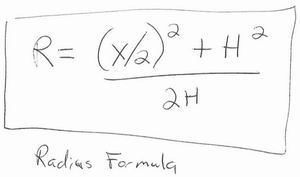Getting Started with a 32mm System
Advice on learning about True 32, KISS 2, and Blum methods for standardizing Euro frameless cabinet construction around a 32mm module.October 20, 2013
Question
Is there a booklet for use in converting over to 32mm construction? Does anyone know where to get something like that? A booklet showing how to setup where holes start, end, and spacing for doors and drawers.
Forum Responses
(Cabinetmaking Forum)
From contributor W:
The Knowledge Base link below may be of help.
Blum Manual
From contributor M:
Another version you can consider is the Kiss II method.
From Contributor C:
Reading both the Kiss II and Blum manuals helped me understand the 32mm system. I didn't have anyone to teach me, so once I read through all the info I could find (a lot here in the Knowledge Base) I made some practice shop cabinets out of melamine. I made some screw ups and learned from them. Education comes at a price - no matter what form it comes in.
From Contributor S:
I adopted the Kiss II system and mixed in some details from the True 32 system as well as the Blum system. The True 32 book is a little dated and oddly religious, but probably the most complete explanation of the 32mm system and how to apply it in the shop down to the details of machine setup and processing tips.
The fastest and most profitable shop I ran/owned was a manual panel processing shop using line boring machines. It was faster than a CNC machine and cost half as much, and had very low overhead. It will not work in every market but very powerful system. Now I am in a shop with a beamsaw and Rover 27 CNC. I still make use of the 32mm system to get better optimization on boring and cutting processes. It makes a big difference if your CNC is maxed out.
From contributor D:
True 32, Blum and Kiss are all, to the extent that they use 32mm increments, 32mm systems. The only real difference between them is start holes/reveals. Everything else, anything that is made/located in 32mm increments (door/drawer faces and everything behind them), can be used with all three systems (hinge cups are always some increment of 32mm apart and an equal distance from the top and bottom).
The only difference between Blum and True 32 side panel heights is that the Blum panels are 7mm taller. That extra 7mm gives you a 30-1/2" tall American box, but you lose the ability to stack boxes. Here, and elsewhere, True 32 is consistent and Blum is Americanized/tweaked.
Kiss on the other hand is balanced (reveals and start holes are equal (t/b)). Itís essentially a modified System 32 (really true 32, a half-overlay system). A key difference between Kiss and True 32/Process 32 is that all drawer/door gaps align with system holes (vs. centered between them, shifted). Note: The difference between shifted and system start holes is 16mm and either can be used with any 32mm system.
From Contributor S:
In the end most shops will invent their own system. There are disadvantages to all. What I wanted was for the reveals to all line up across tall, upper and base cabinets. I also wanted the same boring machine setup to work on all parts. That turned out to be a complicated challenge requiring lots of UCS programming in Cabinet Vision. Read all you can then give yourself a year to develop a system. I donít think any of us could come up with a solid system the first try. That goes for all types of cabinet construction.
